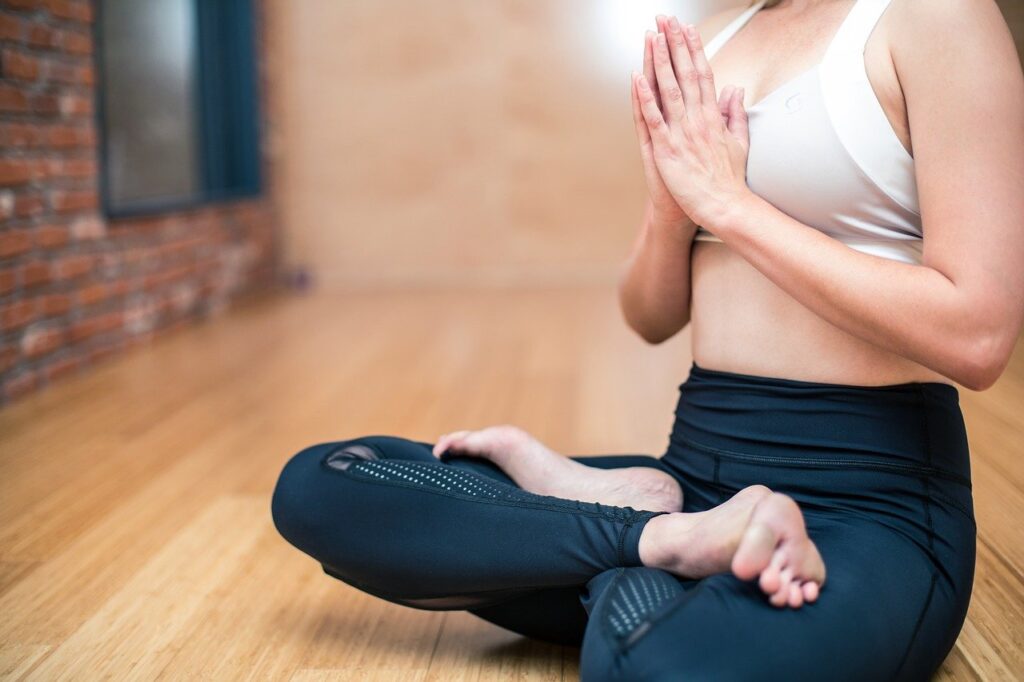Brides are often met with unprecedented stress and anxiety situations – add to that strange times like these. Turning to things that comfort and calm you is only human. While we often opt for easy, quick fixes like devouring junk food, binge-watching our favorite shows, etc. (been there, done that), they can do more harm than good. I’m sure you’ve experienced this yourself – feeling a bit more anxious than before once these innocent acts are over. Therefore, the best practices to put to use, as a bride or otherwise, are also the most recommended ones like eating good fats, meditation, journaling, and exercising.
Research has shown how a single exercise session can positively enhance your mood. Other research papers have also concluded how 30 minutes of moderate exercise a day can reduce anxiety levels, tame millions of thoughts, and improve self-esteem levels. And while all sorts of exercises offer these benefits, there are some specific ones that work for your outer body and inner body in equal parts, like Yoga.
I say this with personal experience: Yoga has the power to heal you. Yoga, when practiced with ancient Indian traditions, isn’t just a physical exercise, but also has meditative and spiritual roots. Physically, yoga increases muscle strength, betters posture, balances metabolism, and improves cardiovascular health. Mentally, yoga builds mental clarity, centers the mind, and sharpens concentration. Want to know which yoga poses are the best to transform your mood? Scroll through to find out.
#1 Surya Namaskar
Surya Namaskar is a set of 12 powerful yoga asanas or poses, done in a fluid, rhythmic motion, so as to awaken the whole body and mind. The practice requires you to form a deep connection between your breath and body movements, thus promoting mindfulness, awareness, and focus in the present. It’s imperative you stay connected to your breath to experience the mental benefits of Surya Namaskar.
“Emphasise on switching from one pose to another in conjunction with your breath rather than getting through each posture quickly,” explains IndeaYoga, a community of yogis in India, on their Youtube channel. And of course, let your breath serve as a guide in all the movements. As a thumb rule, inhale while stretching in the pose and exhale while switching the pose.
So, apart from breathing, where else do people go wrong with Surya Namaskar? “Not maintaining correct alignment during sequences,” reveals Candace, an international yoga instructor on her blog. If you’re a beginner, start slowly. It will take you a few minutes to complete one set of sequences, but it will feel very, very good when you’re done. Here’s a quick video on how you should perform Surya Namaskar step-by-step.
#2 Forward Pose
Another feel-good yoga asana is the standing forward bend. Taking a deep breath while bending down over the ground pushes us to look inside our mind while canceling the noises of the outside world. Interestingly enough, the act of a forward bend is bowing, an act of humility, surrender, and patience. These three qualities can be a game-changer for anyone experiencing high levels of stress or anxiety.
Physically, the forward bend pose stretches tissues all over your body – from the soles of the feet, calves, hamstrings to the lower back, spinal cord, and neck. Moreover, when your head is below your heart, it pumps fresh oxygenated blood to your head. Anxiety hampers your blood circulation, according to research, so a sudden boost can instantly calm down your nerves. Another research study also concludes a positive correlation between depression levels and cerebral blood flow. So forward bends can instantly reduce stress levels, fight insomnia, and better your mood.
One more thing to note while practicing forward bends is to not push beyond your flexibility levels. “The unsafe alignment, as a result, is a very common cause of yoga-related injuries,” writes Beth Spindler, author of ‘Yoga Therapy For Fear’, in a featured article for Yoga International. Practicing yoga asanas the right way will help you reap the maximum benefits out of them.
#3 Downward Facing Dog
A popular yoga asana that is a part of almost all yoga exercise routines is downward facing dog. The pose employs the strength of your arms and legs to stretch your spine fully. This releases cortisol levels, which generally assimilate around your neck and spine, liberating you of stress and anxiety immediately. Also, as your head lies below your heart during the pose, it boosts blood flow to the brain, which calms the nervous system and further relieves any mental strain.
Don’t jump right into it though. This asana, unlike others on the list, requires some warm-up so you don’t injure your spine. It can be jogging in a place for a minute, a forward bend, standing quad stretch, etc. “Despite ubiquity, the downward dog remains one of the most difficult yoga poses to master,” says Noelle Rodriguez, founder of a yoga studio, in an exclusive interview with Yegfitness. It’s important you take it to step by step, respect your body while diligently working towards a better posture.
#4 Cat and Cow Pose
The easiest and the most gentle asana on this list is marjaryasana or cat-cow pose. For yoga novices, who want to experience its wonderful benefits on the mind, start off with this asana. The pose combines breathing exercises with movement: so inhale deeply as you lift your chin and lower your belly (cow pose), and exhale as you round your back towards the ceiling (cat pose).
As each moment is synchronized to breathe, the asana encourages mindfulness, a proven technique to relieve stress-related disorders. In a combined review of more than 200 research papers, it was found mindfulness considerably reduces stress, anxiety, and depression in healthy individuals. Another study concluded mindfulness-based stress reduction not only reduces stress but also boosts relaxation, quality of sleep, and self-compassion.
Additionally, deep breathing during movement helps calm your nerves as well. A 2017 study published in Frontiers of Psychology concluded diaphragmatic breathing or deep breathing reduces cortisol levels in otherwise healthy individuals by promoting a healthy mind-body equilibrium. However, to procure these benefits, it’s crucial that you’re slow and rhythmic in your cat-cow flow. Here’s a video that demonstrates the technique.
#5 Viparita Karani Asana or Legs Up The Wall Pose
There’s a general consensus among modern yogis that legs up the wall pose may have miraculous benefits. And surely so. When practiced properly – legs straight, with a support under your lower back – ‘it’s a gentle way to bring the body into a state of deep relaxation and renewal and recommended for all yoga students, no matter the experience’ via Yoga Outlet.
Legs up the wall pose is also a form of moderate inversion exercise, a proven stress-relief technique. “Inversions alter the blood flow in the brain and support the creation of feel-good neurotransmitters like serotonin and dopamine. It’s not uncommon to feel immediately uplifted after an inversion,” explains integrative medicine specialist, Dr. Karen Koffler to Wanderlust.
Besides, a sudden boost in blood flow to your upper body turns off the ‘flight or fight’ stress response, and calms the gazillion thoughts running through your mind. However, the asana’s true value is that it teaches ‘less is more’ attitude, a notion we often forget in our busy lives. With continued practice, you’ll be able to lead your life with a balanced approach and foster self-love as well.





